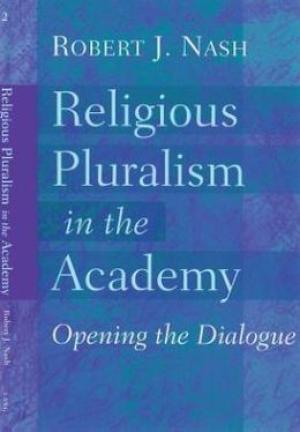Resources
Journal Issue.
Journal Issue.

This book argues that American colleges and universities need to enlarge their understanding of pluralism and multiculturalism by sponsoring open, challenging, spiritually and educationally revitalizing conversations among students about genuine religious difference. Although religious difference is a pivotal component of cultural pluralism, too often today it gets ignored, marginalized, or sugar-coated in higher education. Together administrators, faculty, and students must take the initiative to tranform the academy into an exciting space for robust and respectful religious dialogue throughout the campus. This book offers a number of concrete examples and strategies in each chapter for achieving this objective. (From the Publisher)
This essay explores pedagogical practices and ethical obligations in the embrace of cultural and religious diversity by a faculty team in a theological school course. Attention is given to the interplay of art and ethical dilemmas in an educational praxis that calls into question students' taken-for-granted worldviews and theologies. In the first of three sections the writers identify several assumptions they brought to the conduct of the course regarding diversity, art, and pedagogy. The second section describes student encounters with and responses to art from a variety of cultural contexts. The paper concludes with a critical reflection on ethical and political issues arising from pedagogical practices that engage students with art.
This article reports on the findings of a study carried out with ordinands and faculty in English theological Colleges and Courses (programs). The project aimed to discover (a) how and to what extent students are trained to work in Britain's multi–faith society, and (b) how are ordinands thinking theologically about issues of religious diversity. This article highlights the examples of good practice that emerged from the study and considers what makes for good learning about multi–faith issues for ordinands training for the ministry.
Teaching music in certain seminary contexts poses particular challenges for teaching and learning. The theme of disjuncture between teacher and student in courses that aim to incorporate music in the seminary curriculum are more vital than ever before because of the extreme cultural diversity of our population and integral nature of music in the worship life of religious communities. This essay tackles the difficulties associated with teaching worship music in seminaries where there are a plurality of religious traditions represented and a host of expectations held by diverse student bodies about what connotes worship music. Topics addressed include issues concerning terminology, repertoire, pedagogical methods for teaching worship music, and current issues in church music.
Seminaries have a responsibility to engage students in reflecting upon the spiritual life, as well as providing opportunities to deepen their own spiritual journeys. It also is important that they consider the intentional ways that their understandings and experiences of the spiritual life influence their leadership in the Church. Spiritual formation of seminarians provides particular challenges to faculty of liberal, ecumenical seminaries. This article describes a course designed to address these issues and argues that spiritual formation can be effectively integrated into the curricula of liberal, ecumenical seminaries.
This article responds to the exponential growth in academic textbooks on Western or American Buddhism by arguing that popular trade books written by Buddhist teachers in the West make more effective tools for teaching and learning about the growth of Buddhism in western societies. The use of such texts in the classroom provides students with opportunities to exercise critical thinking and permits instructors to avoid conveying misleading interpretations about the practice, thought, and identities of Buddhists in North America and Europe. The pedagogical advantages of using what could be described as primary sources on Western Buddhism include promoting active learning techniques, muting the differences drawn between convert and ethnic Buddhist communities, and encouraging students to become aware of and refrain from Orientalist approaches towards describing and knowing the religious and/or cultural Other. A list of practical suggestions for classroom exercises using trade books written by Buddhist teachers is provided at the end.